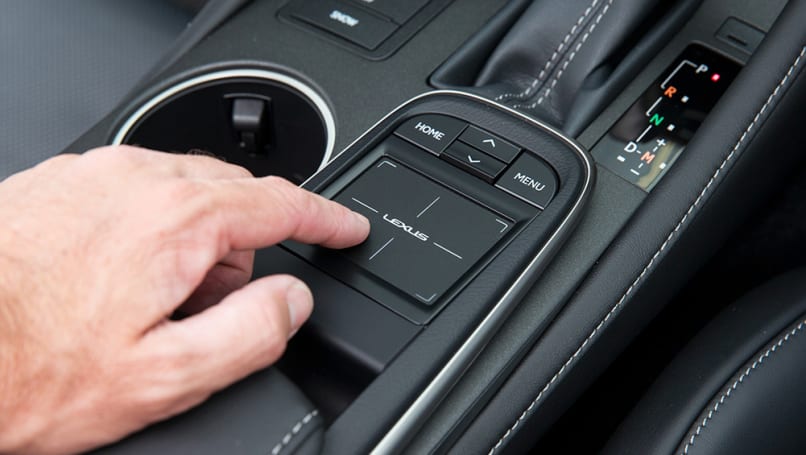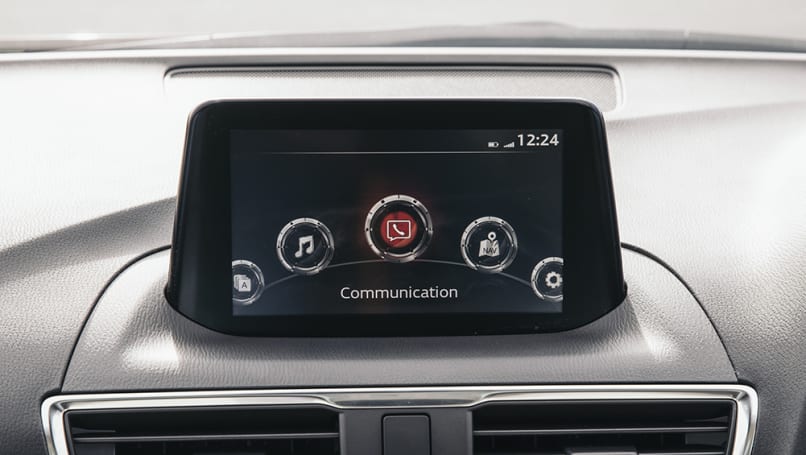
What makes a good car multimedia system?

Can’t tell the difference between MZD Connect, iDrive, or Remote Touch? Or do you wonder what the deal is with CarPlay and Android Auto?
Don’t worry if that all seems perplexing. After all, there was a time when having a tape player in your car was a big deal, and air-conditioning was a bit hoity-toity. By contrast, today's average hatchback is equipped to do a whole lot more, such as answer calls, stream music from the internet, advise you which route to take, and give you a three day weather forecast.
In order to cram in so many functions, without turning your car into a button-fest that would confuse a nuclear plant operator, the traditional collection of knobs and switches has given way to today’s range of slick multimedia systems.
With on-board features becoming a bigger selling point than power output, it's little wonder in-car multimedia systems have started to take centre stage, literally and metaphorically.
However, with so many things on the road demanding your attention, such as errant motorists or school zone speed limits, a multimedia system has to be designed to help drivers organise and operate all these various functions without piling on the stress.
To reduce complexity, multimedia systems are designed to be accessible and intuitive by employing similar methods of operation.
Touchscreen systems

Most people's idea of a multimedia system is a sleek flat panel screen fitted to the centre of the dashboard, bereft of buttons or complex switches. It's certain what they are picturing is a touchscreen set-up, which underlines just how popular they have become.
Nowadays you can find a touchscreen fitted to most cars, ranging from your average Hyundai, right up to a top-of-the-range Bentley.
These systems are, by far, the easiest to familiarise yourself with. After all, you only need to prod the icon or bar on the screen to get things done. They are no more difficult to operate than a smartphone, and look how popular those things have become.
Manufacturers prefer touchscreen enabled systems, too, as they are cost-effective to install, can be easily fitted onto most dashboards, and are extremely flexible in loading a variety of features without being limited by hardware constraints.
A variety of third-party suppliers are even able to swap out your old radio head unit - provided it occupies a big enough space - with an up-to-date touchscreen multimedia system, with minimal modifications to the car’s electricals required.
That being said, while such systems are easy to operate, the main downside is that, in practice, they can be tricky to use when you are on the move. Not only do you have to take your eyes off the road to see what you are about to press, but trying to hit the right button while driving down a bumpy road can test one’s hand-eye coordination, and patience.
The physical controller

Contrary to the popularity of the touchscreen interface, a number of manufacturers have opted to retain a physical controller. These are the central control dials of Alfa Romeo’s 'Connect 3D', Audi’s 'MMI', BMW’s 'iDrive' (and its MINI/Rolls-Royce derivatives), Mazda’s 'MZD Connect', and Mercedes-Benz’s 'COMAND', along with the mouse-like Lexus 'Remote Touch' controller.
Advocates of these systems say they're easier to operate on the move and more intuitive for drivers, since you don’t have to take your eyes off the road for too long to look where you are pointing. What’s more, since the user doesn’t have to reach for the screen to operate it, the screen can be placed further up front of the dashboard, and closer to the line of sight of the driver, thus minimising distraction.
However, it's more difficult to familiarise yourself with a physical controller than a touchscreen system. Users have to get used to the operation of the controller and its shortcut buttons, while entering addresses or search queries is far more troublesome with the limitations of a single controller.
Manufacturers have addressed this shortcoming via the inclusion of a handwriting recognition touchpad, which allows users to write in required letters or numbers, although this feature is more suited to left-hand drive markets where the users can operate it with their right hands.
Plus, unlike touchscreen systems, controller systems aren’t as easy to install, and integration requires additional hardware and fixtures.
Operating with a wave of your hand

No longer the preserve of science fiction, managing devices with a dismissive wave of your hand is a reality thanks to the advent of gesture recognition technology. Normally found on today’s crop of televisions and game controllers, the technology has recently been adopted by multimedia systems, as seen with BMW’s 'Gesture Control' feature on the 2017 7 and 5 Series. A similar, if simpler version of the technology was recently introduced in the facelifted 2017 Volkswagen Golf.
These systems use of a sensor - an overhead camera in the BMW and a proximity sensor in the Volkswagen - able to recognise hand signals and gestures, in order to activate functions or perform selected tasks.
Trouble with these systems, as is the case with BMW’s Gesture Control, is the system is limited to simple hand movements, and you have to place your hand in a certain location so the cameras can log the action. And if your hand isn’t fully in view of the sensor, the system won’t be able to recognise or track it accurately.
In its current form, gesture control is a promising new means of interaction, but will serve to complement, rather than replace, the traditional forms of touchscreen and control knob operated systems.
It's likely gesture controls will continue in a supporting role, in similar fashion to voice recognition. And like voice tech, will expand its capabilities and scope of operation as the technology matures.
Best of both worlds

Although the end goal of modern multimedia systems is to reduce the number of buttons, the most intuitive multimedia systems employ a combination of operation methods. The iDrive system on the BMW 5 and 7 Series, Mazda’s MZD Connect, and Porsche’s 'Communications Management' system, are good examples as they have touchscreen capabilities working hand-in-hand with rotary control.
Phone pairing systems

Considering most of us can’t last even a few minutes without our smart devices, in-car integration has become ever more important. While most current multimedia systems are able to pair with your phone to answer calls and stream music, the next step in device integration enables users to upload their smartphone’s apps and settings and operate it via the car's multimedia system.
Car manufacturers have started working closely with tech companies to make device integration more seamless. The Mirrorlink connectivity standard feature is one such example of cooperation between the two industries. This feature allows users to run certain supported apps from a Mirrorlink-equipped smartphone on a Mirrorlink-equipped multimedia system when paired.
Like Mirrorlink, Apple’s CarPlay and Google’s Android Auto were developed to allow users to pair their smartphones to the multimedia system, though only with its respective smartphone operating systems.
CarPlay and Android Auto allow users to run, and handle, OS-specific apps on the multimedia system, such as Apple Music and Siri for CarPlay, Google Maps and WhatsApp for Android Auto, and Spotify on both.
As far as pairing the device goes, CarPlay’s method is much easier as it only requires the iPhone to be plugged into the car for the pairing to work, whereas pairing an Android Auto system requires installation of an app on the phone to enable wireless connection.
That said, remember these apps are running from your smartphone, so the usual data charges will apply, and it will be limited by signal coverage. So, if you happen to be running low on data, or entering an area with poor coverage, your Apple Maps and Google Maps might not be able to provide navigation info, nor will you be able to access Siri or Google Assistant.
Which multimedia system is best?
The short answer is there isn’t any one multimedia system we can deem 'the best'. Each has upsides and downsides, and it's up to the driver to find out which works best for them.
Ironically, an in-car multimedia system is something we often pay little attention to until we are using it day-to-day. And you wouldn’t want to find out that the location of the screen or controller isn’t all that intuitive after taking delivery of the car.
Ideally, if you are shopping around for your next car, pair your phone with the multimedia system on the test drive and run through its functions.
The merits of any multimedia system shouldn’t be limited to the size of its screen. A good system should be intuitive to operate, easy to use on the move, and legible, particularly under harsh sunlight.










Comments